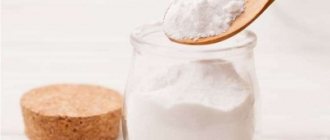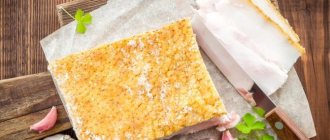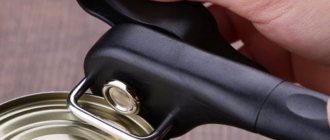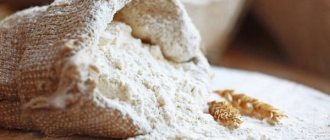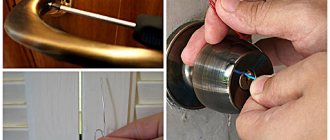Judging by numerous reviews from anglers, bloodworm is the most popular bait. In addition, special bait mixtures are made from the larvae, which are very popular with aquarium fish. Given the high demand for this bait, it is not surprising why many beginners are interested in the question of how to properly store bloodworms at home. Surely every fisherman knows: if you keep the bait in a warm place for a couple of days, then most likely you will have to throw it away. In addition, due to the ingrained sharp putrid odor, a similar fate awaits the moth itself. You will learn how to store bloodworms for fishing at home from this article.
Getting to know the bait
Before wondering where to store bloodworms at home, you need to figure out what this bait is. Bloodworms are worm-like larvae that are laid by the centipede mosquito. Thanks to their striking red color, they are clearly visible from afar.
The bloodworm is located in the silt. They look for him at any time of the year. Bloodworms are removed from rivers and ponds using a sieve. After being removed from the sludge, the larva is thoroughly washed. If you need bloodworms, you don’t have to look for them in bodies of water. All you have to do is go to a fishing store and buy bait there. Enterprising fishermen also sell bloodworms. Now that you have acquired this rather catchy bait, you should ensure that the bloodworms are properly stored at home.
Fishing rules
As you know, the habitat of bloodworms is a body of water, namely its muddy bottom. The reason for this is the presence of coolness at the bottom on hot summer days.
Using a pump
To obtain bloodworms on an industrial scale, specialists use a pump. The operating principle of the device is as follows:
- water sediment is mounted on the shore, directing the hose directly into the silt;
- by turning on the pump, you can observe the suction and its movement into the unit;
- since the pump has colanders with different hole sizes, the larvae are retained on them;
- treatment of a large area with a pump facilitates the rapid extraction of a large number of larvae.
Bucket with fine mesh
A rope is tied to the handle of the device and thrown into a water source. Next, the bucket is slowly pulled ashore. The surface layer of mud begins to accumulate in the bucket, and the fisherman needs to wash the substrate out of the container.
To carry out the procedure, a person needs to go knee-deep into the river and rinse out the container. After the dirt disappears, mobile larvae and other small animals will remain at the bottom. Next, the fisherman will have to sort the catch, highlighting the raspberries.
Using dredge
This option for extracting larvae of the centipede mosquito is suitable for the cold period of the year. To wash a large amount of bloodworms, make a square-shaped hole in the ice. A device similar to a stretcher is mounted into it. If the device has a fine-mesh bottom, then it is worth carrying out work similar to the previous method.
After this, it is necessary to catch a sufficient volume of silt with a scoop and place the dredge in the hole. The bloodworms are washed out due to the fact that the turbidity goes into the water, and the larvae remain on the sieve.
A special guitar for extracting bloodworms
This device does not have a sieve, so the washing procedure does not take much time. For work, you can use ordinary pitchforks, the horns of which are tied with wire, like strings. Using this device, you can plow through the mud and thereby catch the larvae. The last stage of the procedure is to carefully shake off the larvae and collect them.
Gauze trap
You need to make a bag out of gauze or mesh with small cells, tying a rope to its neck. To make the bag easy to throw, it will need to be weighted with pebbles or bait. Since bloodworms like organic matter, a piece of meat or fish can be used as it. The prepared bag is thrown onto the area where there is a muddy bottom. The trap is left for 24 hours, after which it is carefully removed and the larvae are collected.
A simple trap from a jar
Such a trap for bloodworms can be made from an ordinary tin can without a lid. The bottom of the container must be perforated with a small nail, making something like a sieve. You need to attach a special thick metal bracket to the top side and attach it to a pole made of lightweight material. The trap should look like a movable scoop, which has a bottom similar to a sieve. With this tackle you need to pick up dirt, wash it and lift it to the surface.
Ice drill
This device is used in winter; it helps to collect a small number of larvae. An ice drill allows you to get bloodworms in the muddy shallow waters of a river or lake. Scheme for catching centipede mosquito larvae:
- a meter-long hole is formed in the ice;
- the auger is screwed into the sludge, after which it is sharply pulled out along with the adhering dirt;
- The water is shaken several times and bloodworms are collected on ice.
About temperature conditions
Beginners often wonder how to store bloodworms at home in winter? According to experts, proper storage of bloodworms is to provide a nutritious and moist environment for the larvae. The temperature should be low, but not minus. The optimal indicator varies between 0... +8 degrees. A large amount of moisture in such places is undesirable, otherwise the larvae may suffocate. Of course, in the summer you can choose the bottom shelf in a household refrigerator for storage. In winter, a polystyrene box wrapped in newspaper is ideal for this purpose. However, there are several more effective storage methods, more about which below.
The use of newspapers, fabric flaps
Active bloodworms are packed in a container with a layer of damp newspaper. A lid with small holes is used to allow the proper amount of air to enter. Packaging changes every day.
It is effective to use moss or flannel fabric. The above items are placed on the bottom of the container, and the bait is distributed over this surface in a thin layer. It is advisable to regularly moisten the material covering the bait and destroy dead particles.
One common method of storing bait is used tea leaves. Before selecting individuals and preparing for fishing, it is advisable to sprinkle them with starch so that they are easily separated from the tea leaves.
About storage in a newspaper
For those who do not know how to store bloodworms for fishing at home, we can recommend using a newspaper for this purpose. The handicraft moth is made from three sheets. One of them, which will be located between the other two, is pre-moistened. Bloodworm larvae should be placed on a third sheet of newspaper. The bait should lie in a 5 mm layer. Afterwards, the newspaper sheets are carefully wrapped. The bloodworm is kept in a cool place. Most likely, several larvae will die, and therefore experienced fishermen advise checking the sheets daily and removing dead individuals.
Newsprint
One of the simplest and most common methods, but not the most favorable for bloodworms - with its help you can keep the larvae alive for no more than two weeks. To implement it, you need to take 3 layers of newspapers, moistening one of them with water. The wetted layer should be located between the other two. Bloodworms are placed on the surface of newspapers folded together, then wrapped in a square and placed in a cool place.
Dead larvae are removed every 1-2 days. Change newspapers as necessary, the intermediate layer of which should always be damp (for which it is recommended to do this daily).
In a potato
Before storing bloodworms at home in a homemade potato bloodworm, the fruit must be prepared. First of all, choose a raw vegetable. Next you need to cut it in half. Some craftsmen only cut off its tip 20 mm thick.
After the potato is divided into parts, the core is carefully cut out from the two halves. It is important that the wall thickness is at least 10 mm. Next, the larvae themselves are placed directly in the recess, and both halves of the potato are pressed tightly against each other. If you choose the second method, then the core is made in most of the fruit, and it will be closed with a 20 mm tip. Potatoes with larvae are stored in a cool place and washed every day.
Tea brewing
This method involves placing the tea leaves at the bottom of a glass container, which must have a lid. For ventilation, small holes are made in this lid, and the bloodworms are placed at the bottom of the container, evenly mixing with the tea leaves. Next, as always, it is placed in a cool place. Once a day, the container with the larvae and tea leaves should be shaken.
This method cannot be called ideal, since due to the contact of the larvae with air, their life expectancy will not increase much. But the good thing about using tea leaves is that it requires very little preparation. In certain conditions this may be useful. For example, this method of preserving bloodworms can be used during a long hike.
Tea leaves can be replaced with white swamp moss. Before mixing it with the worms, you need to break it down into small pieces. Otherwise, the requirements are the same as in the case of welding.
How to store bloodworms in the refrigerator?
At home, some fishermen store bloodworms in potato squeezes. They are prepared as follows. A small potato is peeled and grated. Next, the resulting mass is squeezed out and placed in a thin layer on gauze. The larvae are placed on top, which must be carefully covered with a new layer of grated and squeezed vegetables. At the end, the gauze is wrapped and placed in the refrigerator.
You can also store bloodworms in the refrigerator in flat containers with tight lids. It is enough to line the bottom of the vessel with a small layer of larvae, and then moisten them with a spray bottle. As a result, an oxygen-rich environment will form, which will ensure the safety of your bait.
The process of separating live larvae
The worm-shaped larva of the centipede mosquito is one of the popular baits for many fishermen, used by them during fishing. The bright red color of the larvae is attractive to fish, because it is visible from afar and becomes valuable and at the same time fatal prey for them.
The bloodworm's main habitat is silt, so it is easy to find in rivers, ponds, and lakes. After the material is caught, it is washed and used as bait, which fishermen store at home in the necessary conditions. Long-term storage of wealth is preceded by mandatory and important measures to organize it. An important stage is the separation of active individuals from dead larvae. It is advisable to screen out bloodworms at least twice a week.
How to weed out the unnecessary?
To organize an event to separate live bloodworms from dead ones, it is advisable to choose a large container (bucket, basin). Using a regular metal sieve or mesh, where individuals are placed on top, they are immersed in water. A viable bloodworm moves through small holes, falling into the water. All dead bloodworms remain on the surface of the screen and are subsequently destroyed.
Each fisherman can make a device for the above procedure with his own hands, using a plastic lid with small holes. All living larvae, when immersed in water, remain in it, and dead ones remain on the surface of the lid.
In sand
This method can also be recommended for beginners who do not know how to store bloodworms at home. To make a moth bottle, some craftsmen use a photographic frame. Of course, other flat dishes with low sides will also work. Screened sand should be used. It fills the container with a layer of 20 mm. Next, water is poured into the vessel. It should cover the sand by 10-20 mm. Now you can pour the bloodworms into the vessel. According to experienced fishermen, a living and energetic larva will certainly burrow into the sand, while a dead one will immediately emerge. Dead specimens are immediately removed. It is advisable to change the water every three days. Before entering the reservoir, the sand is sifted using a sieve or gauze filter. According to the owners of such devices, the filter will allow even the smallest grains of sand to pass through, but will retain the larvae.
Wide mouth jar
This effective and convenient method requires any container with a wide neck, that is, a jar, the upper part of which is not narrower than its bottom. For these purposes, you can take a plastic bottle and cut off its top part. The bottom of the container is covered with river sand and filled with water. Then the live bloodworms are washed and poured into water. The larvae will soon bury themselves in the sand - that’s how it should be. After this, gauze is attached to the neck, through which air will flow. When bloodworms are needed, they are collected from the bottom. It is convenient to collect it with a sieve that allows sand to pass through but leaves behind the larvae.
In a tin can
To prepare a homemade bloodworm, an ordinary tin can will do. In it, using an awl or a nail, you will have to make a large number of holes.
Some craftsmen use a drill at this stage. After the holes are ready, the sharp edges in the inner part need to be rounded off or filed with a file. If you ignore this recommendation, you will most likely get hurt later when you remove the larvae. Then the jar is wrapped in several layers of gauze. To prevent the bloodworms from spoiling, experts advise placing the container in cold water.
Blitz tips
- By drying mosquito larvae before a long storage process, it is possible to ensure the preservation of their bright color and motor activity.
- Properly frozen worm-like specimens can retain their function after being in the freezer for more than 4 months.
- During the hot summer months, it is not recommended to suddenly change the temperature of the bloodworm. From a warm room it should be moved to a cooler area, and only then lowered into cold water. A sudden change in temperature will render the bait unusable.
- When adding bloodworms to the bait mixture, it must be combined with fine white clay or talcum powder.
- Frozen bait remains stable for a short period of time after defrosting, so it is recommended to use it in extreme cases.
- To avoid injuring the larvae by touching your hands, you should first moisten your fingers and only then touch the bait.
In the toilet cistern
If you choose this method, you need to get a nylon bag. It is in this that the larvae will be contained. It is made from women's tights. How to store bloodworms at home in a drain tank? As experienced fishermen advise, the bag should be positioned so that it does not touch the walls. There is no need to tamp the stocking too tightly with bloodworms, otherwise the larvae will die in the cramped space. This method is good because you don’t have to change the water on purpose. It will be updated every time you drain. Of course, this will only be possible if the tank is operational. The undoubted advantage of such storage is that the water filling the tank is quite cool. Judging by the reviews, bloodworms can live for a month in such conditions.
Popular methods for storing bloodworms
Wet cloth. If you plan to catch in the coming days, you can store the bloodworms in the lower compartment of the refrigerator, wrapping it in a damp cloth. Most winter fishermen do just that. At first glance, everything is simple: wet a piece of old cloth (you can use newspaper), wrap the larvae in it, put it on the shelf away from the food and you're done!
But even this simplest option has its own nuances. Firstly, you need to keep an eye on the bait - control the humidity of the cloth and not allow it to dry out completely. Secondly, ordinary water is not suitable for these purposes. If you use homemade chlorinated water from the tap, then you can forget about live bloodworms. It is best to wet the fabric with melt water, which definitely does not contain chlorine impurities.
There is one more important rule: the bloodworms should not be placed too tightly, in a thick layer, otherwise it will quickly suffocate. If all requirements are met, then with this method the larvae are stored for a week
Container with water. This storage method is not as simple as the previous one, but it is more effective. What should be done? First, wrap the precious larvae in a piece of gauze or place them in the lower (trace) part of a nylon stocking. Then put it in a jar filled with clean water (preferably melted water) and take the container to the basement. If the hostess allows, you can put the container with the worms in the refrigerator. Then you just need to remember to change the water once a day. With this method, bloodworms are stored for more than two weeks.
Special cassette. This item can be purchased at a pet store. The cassette has two sections separated by a fine mesh or partition with 3 mm holes. Bloodworms are poured into the upper section and filled with filtered water. In this case, living active larvae slide down, and their dead relatives and small debris remain on top. This way the bait is not only stored, but also sorted. The procedure is repeated every two days: they move the red worms upstairs, fill them again with clean water and throw away everything that remains on the grid. The cassette should be stored in the refrigerator.
Frozen
This storage method is considered the most radical. Bloodworm larvae are first washed in running water, slightly dried, and then placed in the freezer. Judging by the reviews, many fishermen store bait in special cells, through which they make ice. For this purpose, the larvae are placed in molds and then filled with water. Next, this design is placed in a bag, and then in the refrigerator, namely in the freezer.
According to experts, frozen bloodworms retain their nutritional properties for a month. If the larvae have been thawed, there is a risk that they will begin to spoil. Therefore, you will have to use them up as quickly as possible.
Bloodworm selection
If you choose bloodworms for complementary feeding, you don’t have to be too picky: small larvae are inexpensive, but you need a lot of them. If you don't plan to use it in full, the leftovers can be dried or frozen (more on that later).
But if you plan to store bloodworms for bait, it is fundamentally important to choose large larvae, because even “giant” individuals are small, very delicate and sometimes create problems when hooked. However, it is important that the larvae remain mobile for as long as possible: their movement creates microwaves, which attract fish. The “aroma” they spread also plays an important role.
When choosing bloodworms for bait, you need to pay attention to large individuals that are minimally damaged during extraction. Ideally, there should be no damage at all, but it is problematic to keep track of this in conditions of large volumes. It is vitally important to clear the mass as much as possible of injured individuals, as well as debris.
The secret here lies in the methods of extracting bloodworms. It is caught all year round, but the optimal time for harvesting larvae is winter: it is at this time, to the delight of ice fishing enthusiasts, that the highest quality bloodworms, suitable for storing at home for quite a long time, go on sale.
Bloodworms obtained industrially are used primarily for bait: in the process they are severely injured. Judge for yourself: sludge from the reservoir is fed into a special pipe and washed through a huge sieve made of metal mesh. Naturally, we are not talking about any delicacy, so the mass contains a large number of damaged individuals. Feed bloodworm is paler in color than its hand-caught counterpart. It is best to use it immediately, freeze or dry it.
When harvested by hand, the larvae are damaged much less, because they are handled much more carefully and washed through linen bags. As a result, large bloodworms of a rich scarlet color are sorted out, suitable for bait. We will keep it.
In foam rubber
How to store bloodworms at home in a blood bottle? Every fisherman should have this item. Having it in your arsenal, it will be much easier for you to both store and transport bait to a pond. If you need to purchase this device, go to a fishing store. There, bloodworms are presented to buyers in a wide range. Whatever product you purchase, wood or foam, you need to provide the bait with a comfortable living environment. The fact is that it will be a shame if, having a bloodworm and a special device for storing it, the larvae die in it. In this case, fishing will most likely be ruined. What is the best way to store bloodworms for fishing at home? First, buy a moth tray, and then line it with slightly moistened foam rubber. The size depends on the dimensions of the product itself. According to experts, wet foam rubber is considered the best environment for storing this bait. The fact is that the larvae will not dry out in it. He moisturizes only once a week. Mostly, bloodworms are placed in the refrigerator on the bottom shelf.
Optimal storage conditions
As mentioned above, for bloodworms you need to create conditions that are as close to natural as possible. First of all, this concerns temperature and humidity.
Let's take a brief look at the life cycle of the longhorn mosquito. Adults lay eggs in the spring. In the summer, larvae emerge from them - the same bloodworms. With the onset of winter, they burrow into the silt and remain there in this form until spring, when they first pupate and then transform into adults.
This means that storing bloodworms requires a “winter” temperature,
ranging from 0 to 5°C .
Sharp temperature fluctuations negatively affect its viability, which determines the most important rule: the remains of bloodworms taken with you for fishing cannot be returned to the general container. Frosts and long stays at temperatures above 10°C kill the larvae. This means that during winter fishing you need to place the container with bloodworms in an insulated box, and sometimes, in severe frosts, and periodically warm it under clothes. In hot summer conditions, it is better to store the container with bait in the shade or lowered into cool water. At home, it is better to use the refrigerator or cellar.
Bloodworms are aquatic, so a humid environment is favorable for them. It thrives in water, so wet storage methods are the most common. Sometimes the dry method is also used, but they cannot be combined. Wetting dry-stored bloodworms inevitably leads to the formation of mold and its death.
Freezing and drying for bait
If you need bloodworms for bait, a cheap "limannik" obtained industrially is suitable. Moreover, it is absolutely not necessary to store it alive, because as a supplement it can be used both defrosted and dried.
The largest number of experienced fishermen are inclined to freeze bait . To do this, just place the container or bag with the larvae in the freezer. However, it must be taken into account that it is not recommended to re-freeze thawed bloodworms: it will subsequently spread into an amorphous mass. Therefore, it is better to use small portioned containers or trays with separate cells to select the right amount of bait before each fishing trip.
Dried larvae can be used both as the main food for aquarium fish and for preparing a bait mixture for fishing. In this case, high quality is also not necessary. You can dry the bloodworms in the oven at a low temperature, on a tray lined with paper (the larvae are distributed in a thin, even layer). In the warm season, natural drying on a frame with gauze or cotton cloth stretched over it is preferable. The technique is simple: apply a thin layer of the paste onto the fabric and place the frame in the shade in a draft, preferably at an angle. It is fundamentally important that the fabric is ventilated on both sides. The mass dries out gradually, so the fabric needs to be shaken off periodically to collect the finished fish delicacy.
Storing live bloodworms
Let's move on to solving the most difficult and important task: storing larvae at home. There are several relatively simple ways to maintain its vital functions.
- Bucket or tank . In this case, we are talking about storage in conditions as close as possible to natural ones. A tank or other large container is filled with water and silt with bloodworms and placed in a cool place. The problem is to find this very place: it’s too cold on the balcony, it’s too hot in the apartment, there’s not enough space in the refrigerator. But if you have your own cellar, this option is ideal - you can stock up on live bait for the whole winter. In the fall, you can display the container on the balcony. If you have an insulated loggia during a mild winter, you can occupy it too.
- Newspaper . A very popular method in which bloodworms live up to two weeks. We take newspaper, fold it in half, moisten it (you can additionally put lumps of wet paper inside), distribute it in the central part of the larvae, pack this wealth in the form of an envelope, and place it in the refrigerator. The packaging must be loose, otherwise the larvae will get crushed and die!
- Cistern . In this case, the bloodworms are stored in a nylon stocking on a frame placed in an ordinary drain tank. If the plumbing is good and the water is not overly chlorinated, it can be kept viable for several months as long as dead specimens are removed promptly. Important: if you use a stocking without a relatively rigid frame (made of wire, for example), the larvae on the sides will wrinkle and this will cause the death of the entire mass.
- Potato . We imagine that we will prepare potatoes with filling: cut off the top, cut out the center and get an impromptu container. Mix the bloodworms with dry tea leaves (you can gut an ordinary bag), place them inside the potatoes, cover with the top, and secure with toothpicks or sharpened matches. We store the bait in the refrigerator for no more than five days; if desired, we take it for fishing directly in the potato. This option is very convenient due to its mobility, but try not to scare the household members who want to inquire about the marvelous “dish”.
- Special cassette . Storing bloodworms in special cassettes is the most convenient option for home use. These accessories of various capacities can be purchased at fishing stores. In structure, they resemble nesting dolls, consisting of two autonomous parts. The inner container has a honeycomb bottom, and the bloodworms are placed in it. The outer container is filled with water so that the larvae float in it. After some time, the bloodworm crawls into the outer container, and the dead individuals remain on the mesh. They are removed immediately and with a change of water, which is carried out every 2-3 days. Under no circumstances should the cassette be packed tightly or stored outside the refrigerator without ensuring the proper temperature conditions.
We hope that our fishing lifehacks will help you ensure the life of this universal bait for as long as possible!
Fishermen wonder why I’m biting and they’re not?
I’m revealing a secret just for you: it’s all about the miracle bait! More details
The most common beginner mistakes
Very often, novice fishermen expose bloodworms to sudden temperature changes. For example, larvae are kept in relative warmth at home, then directly on the pond they find themselves in an environment with a low temperature. It is possible that fishing will take place without a bite and the bait will remain. Mostly beginners place these larvae back into the bloodworm. As a result, a sharp temperature jump will lead to the death of the bloodworm, and then the rest of the larvae. Therefore, experienced fishermen advise putting the remaining bait in a separate container.
Storing bloodworms involves keeping them in a humid environment (this method is also called “dry”) or directly in the water itself, which is the natural habitat of the larvae. Bloodworms that have been stored “dry” cannot be wetted. However, most fishermen do this, as a result of which their bloodworms quickly die. In addition, excess moisture with the “dry” method will contribute to the development of mold, which is also harmful to the larvae.
What do you need to know if you are going to fish with this bait?
- The hook should be made of thin wire;
- The bloodworm must be fresh. How to determine this? A trivial observation of them: fresh bait has a bright color, glitters in the sun, and moves actively;
- After biting, the larvae need to be changed;
- It is necessary to place the bait extremely carefully, everything should look natural;
- Movement is the main thing that attracts fish, this is worth considering when choosing bloodworms.
And also let’s not ignore the methods of attaching bloodworms to a hook:
- Standard - the body of the bait must be pierced through;
- Ring - one larva is used, first it attaches the bloodworm according to the standard method, and then the circle is opened, resulting in the formation of a ring;
- Sports - this method is often used in competition, hence the name. The hook needs to be inserted between 5 and 6 rings, without bringing the sting out, but pointing it towards the head, or even the tail of the larva, as you prefer. Next, we move the remaining hook into the body of the bloodworm.
In conclusion, you need to dwell on some small secrets when handling bloodworms:
- Frozen bloodworms can be stored for up to 3 months, or even more;
- If the bloodworm is dried, it becomes more active and bright, but its lifespan is reduced to 1 day.;
- In the summer, when using frozen bloodworms, the larvae need to be given time to warm up; if the bait is immediately put on a hook and thrown into the water, it will immediately respond to temperature changes;
- If you add small bloodworms to the bait, you need to mix it with flour, talcum powder or white clay;
- Of course, you can use frozen bloodworms as bait, if there is absolutely no other bait;
- When handling larvae, you should use a wet sponge, so the bloodworms do not stick to your hands, which causes inconvenience, and also does not cause injury.
Purchase and preparation
Nowadays, many fishermen do not wash bloodworms themselves, but prefer to use purchased ones. Moreover, it is quite accessible and inexpensive. However, when buying, you need to be careful and even picky. Here are the main characteristics by which you should make your choice. Bloodworms must be purchased clean and alive “one hundred percent.” Lethargic and immobile individuals cannot be stored. It is better to take estuary - it is more durable. Before storing, the larvae should be sorted for dead ones. Because if dead ones are also stored with living individuals, then the first ones quickly die. And they will last longer this way. In general, it is necessary to sort the bait regularly. The storage temperature in the selected location (we'll talk about this below) should not exceed plus eight degrees Celsius. Then the living conditions for the bloodworm are close to ideal.
